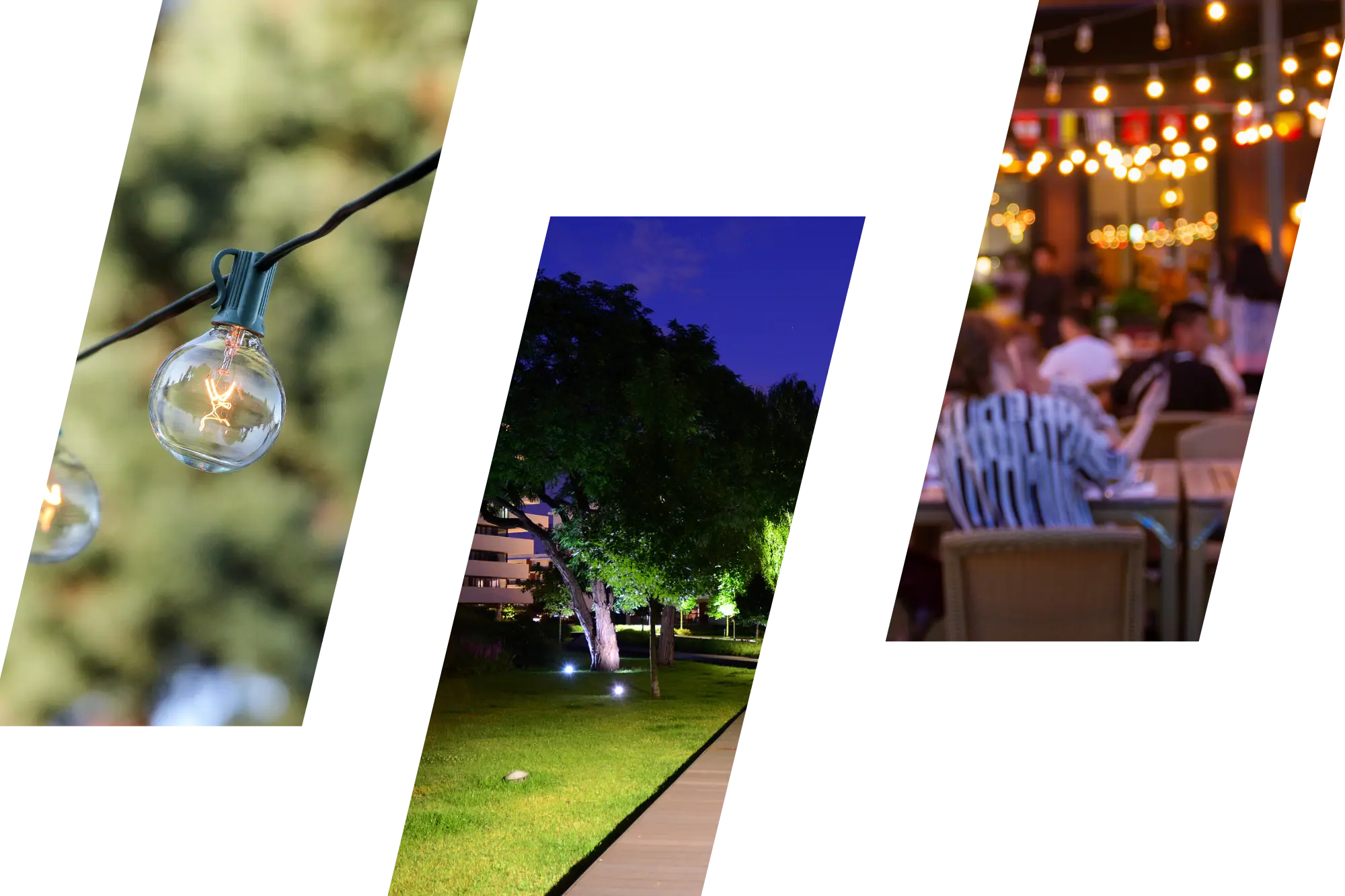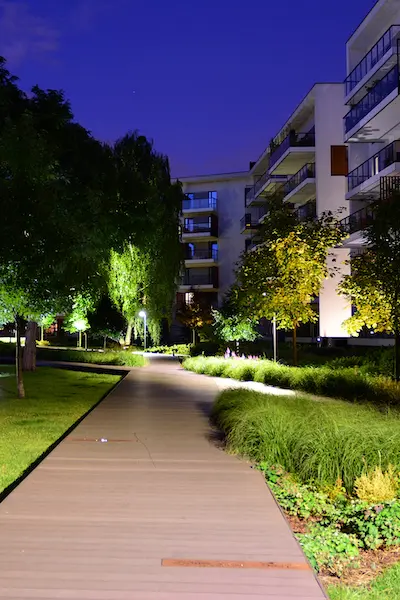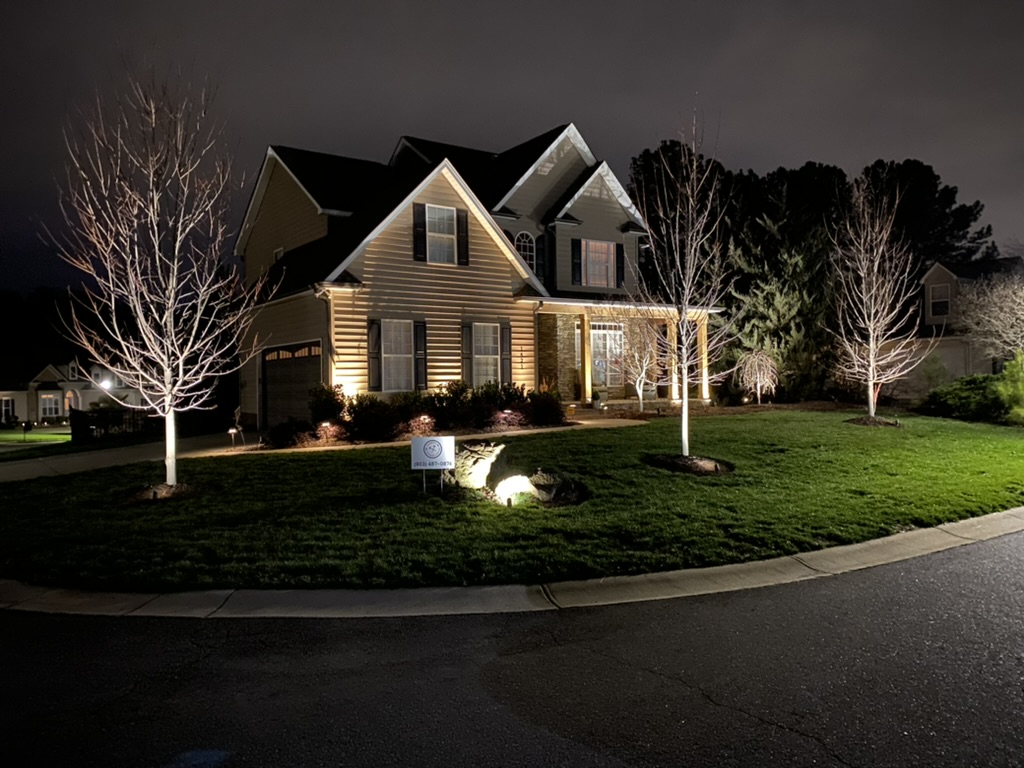
What is Architectural Lighting?
Architectural lighting is an important part of any outdoor design project. Palmetto Outdoor Lighting offers a range of lighting services to ensure that your outdoor area looks its best at night. Our architectural Lighting series features high-quality lights, perfect for illuminating walkways, patios, gardens and other outdoor spaces.
Architectural lighting refers to the use of light as a design element to enhance the aesthetics and functionality of a building or space. It involves the strategic placement of light fixtures, the selection of appropriate lighting techniques, and the careful consideration of lighting design principles to create visually appealing and well-illuminated environments.
Here are the benefits of architectural lighting:
- Enhanced aesthetics: Architectural lighting can transform the appearance of a residential property by highlighting its architectural features, textures, and details. By strategically illuminating certain areas, such as facades, landscaping, or artwork, the lighting design can create a visually striking and inviting atmosphere. At Palmetto Outdoor Lighting, we will make that possible.
- Improved safety and security: Properly designed architectural lighting enhances safety and security around the residential property.
Outdoor lighting can illuminate pathways, stairs, and entrances, reducing the risk of accidents and making it easier for residents and guests to navigate the area at night. Well-lit exteriors also deter potential intruders, as dark areas provide fewer hiding spots.
- Functionality and usability: Architectural lighting allows homeowners to optimize the functionality and usability of their living spaces. By incorporating different lighting techniques, such as task lighting for specific activities (e.g., reading or cooking) or ambient lighting for overall illumination, residents can create environments that are both visually appealing and practical.
- Mood and ambiance: Lighting plays a significant role in setting the mood and ambiance of a residential property. Through the use of dimmers, color-changing lights, and various lighting control systems, homeowners can adjust the intensity, color, and warmth of the light to create different atmospheres for different occasions or times of the day.
- Energy efficiency: With advancements in lighting technology, architectural lighting can be energy-efficient, helping homeowners reduce their energy consumption and environmental impact. LED (light-emitting diode) fixtures, for example, consume less electricity than traditional incandescent or fluorescent lights and have a longer lifespan, resulting in cost savings over time.
- Increased property value: A well-designed architectural lighting system can add value to a residential property. Potential buyers or renters often appreciate properties with thoughtfully implemented lighting that enhances the curb appeal, architectural details, and overall ambiance of the space.
Overall, architectural lighting allows homeowners to personalize their residential spaces, create visually appealing environments, enhance safety and security, and optimize the functionality and energy efficiency of their properties. Consulting our outdoor lighting experts ensures that you can get the best architectural lighting near me.
Designs
Architectural lighting design is a way of illuminating a space in order to create an atmosphere and meet the functional requirements of the occupants. It also helps to add character and emotion into a building’s architecture.
Here are some of the most popular types of architectural lighting designs:
- Task Lighting: This kind of lighting focuses on providing illumination for specific tasks, such as reading, writing or cooking. Task lighting should be bright enough to effectively light up the area but not so bright as to cause glare.
- Accent Lighting: This type of lighting focuses on highlighting specific areas or features in a space such as artwork, feature walls, shelves or staircases. It can also be used to draw attention away from other elements that may not be aesthetically pleasing.
- Wash Lighting: This type of lighting is used to evenly spread light across a large area such as an entire wall. It creates a soft, even illumination that can help create visual interest in the space.
- Wall Washing: This type of lighting is used to highlight the texture and shape of walls, columns or other elements. It creates a dramatic effect by evenly illuminating the area with light and shadow.
- Ambient Lighting: This type of lighting helps to set the overall mood of a space by providing general illumination that can be adjusted for different activities and needs. Ambient lighting is usually supplemented with task, wash and accent lighting to create a balanced look in the space.
- Natural Lighting: This type of lighting is used to bring natural light into a space. It can help to reduce the need for artificial lighting, making it more cost-effective and energy-efficient. Additionally, natural light can help create a pleasant atmosphere in a space.
By using these types of architectural lighting designs, you can create an aesthetically pleasing and inviting space that is perfect for any activity. Lighting can be used to enhance the look of a space, to set the mood, or simply to make it more functional.
Whether you’re looking for accent lighting, wash lighting, wall washing or ambient lighting, there are plenty of options available to help you create the perfect atmosphere.
For more information on architectural lighting design, contact Charlotte, NC’s leading outdoor lighting experts – Palmetto Outdoor Lighting. Our team will be able to provide you with more detailed advice and help you create the perfect lighting solution for your space.
With the right combination of lights, you can create an inviting atmosphere that is sure to impress. Give us a call today!

How to Do Architectural Lighting
Designing and implementing architectural lighting involves careful planning and consideration of various factors.
Below are the key steps to follow when doing an architectural lighting
- Define your goals: Begin by determining the objectives of your architectural lighting project. Identify what you want to achieve with the lighting design, such as highlighting specific architectural features, creating a certain mood or ambiance, or improving functionality and safety.
- Evaluate the space: Assess the architectural elements and layout of the space you want to illuminate. Consider the building’s façade, interior layout, room functions, and any unique features or focal points that you want to emphasize. Take into account natural lighting sources, such as windows or skylights, and how they can be integrated with artificial lighting.
- Understand lighting techniques: Familiarize yourself with various lighting techniques and their effects. This includes understanding the principles of ambient lighting (overall illumination), task lighting, accent lighting and decorative lighting. Consider how these techniques can be applied to enhance the different areas of your space.
- Create a lighting plan: Develop a lighting plan that outlines the placement and types of light fixtures you will use. Consider the quantity, intensity, color temperature, and beam angles of the light sources. Determine the appropriate fixtures for each area, such as recessed lights, pendant lights, track lights, or wall sconces. Also, consider the compatibility of your lighting plan with existing electrical infrastructure.
- Choose lighting fixtures: Select lighting fixtures that align with your lighting plan and the desired aesthetic. Consider factors such as style, size, finish, and the type of bulbs they use. LED fixtures are a popular choice due to their energy efficiency and versatility. Ensure that the fixtures are suitable for both indoor and outdoor use, depending on your project’s requirements.
- Consider lighting controls: Explore the options for lighting controls to enhance functionality and flexibility. This may include dimmers, motion sensors, timers, or programmable lighting systems. Lighting controls allow you to adjust the intensity, color, and timing of the lights to suit different activities or create desired atmospheres.
- Maintenance and updates: Regularly maintain and clean the lighting fixtures to ensure optimal performance. Keep an eye on bulb lifespan and replace them when necessary. Stay informed about advancements in lighting technology, as updating fixtures or controls in the future may further improve energy efficiency or functionality.
It’s important to note that architectural lighting can be a complex task, especially for larger projects or when specific expertise is required. In such cases, it is advisable to consult with professional lighting designers or specialists like Palmetto Outdoor Lighting who can provide expert guidance and help you achieve your vision.


Hover/Touch to View at Night
Pricing
At Palmetto Outdoor Lighting, we understand that light isn’t just a necessity – it’s an art form. We are proud to provide a wide range of lighting services for commercial and residential buildings at competitive prices.
Our team is passionate about creating custom designs that will enhance any space. Our experienced designers and technicians bring decades of experience in the lighting industry, allowing us to provide personalized and high-quality solutions.
We offer a variety of packages for our services so that you can find one that fits your needs and budget. Our fees are based on the number of fixtures, level of complexity, size of the area being lit, and other factors. We would be happy to give you an estimate based on your individual needs.
If you’re looking for a partner to help bring your vision to life, look no further than Architectural Lighting Solutions. Our team is here to answer any questions or concerns you may have about our pricing and services.



